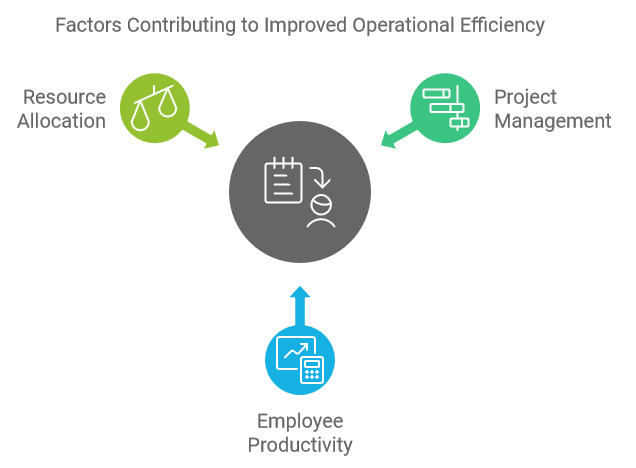Time Tracking for Client Billing and Invoicing: Why and How It Matters
In this article, you will learn about Time Tracking for client billing and invoicing: Why and how it matters
6 min read
Time Tracking for Client Billing and Invoicing is a crucial aspect for service businesses of all sizes. Understanding the exact amount of time spent on each task helps businesses bill clients accurately and ensure transparent invoicing.
In this blog post, we will delve into the various facets of time tracking, explore its importance in client billing and invoicing, and provide actionable tips to streamline your time tracking process.
Why Accurate Time Tracking is Crucial for Client Billing
- Ensuring Fair Billing: Clients expect transparency in invoicing. Proper time tracking enables businesses to bill clients accurately for the hours worked, leading to fair and justified billing.
- Improving Profit Margins: By keeping a precise record of billable hours, businesses can identify any inefficiencies and optimize time management practices, leading to better profit margins.
- Enhancing Client Trust: Transparent time tracking fosters trust with clients. When clients see detailed time logs, it builds their confidence in the services provided.
Pro Tip
Use employee time tracking software that integrates with your invoicing system. This reduces the risk of manual errors and saves time.
How Time Tracking Improves Operational Efficiency

Efficient time tracking goes beyond just billing. It impacts overall operational efficiency significantly.
- Project Management: Knowing how long specific tasks take allows project managers to allocate resources more effectively, improving project timelines and delivery schedules.
- Employee Productivity: Tracking time helps understand employee productivity levels. It sheds light on how time is being utilized and if there are opportunities for improvement.
- Resource Allocation: Effective time tracking provides insights into workload distribution, ensuring that no single team member is overburdened while others are underutilized.
Pro Tip
Regularly review time logs and reports to identify patterns and make necessary adjustments for better efficiency.
Choosing the Right Time Tracking Tool for Your Business
Not all time tracking tools are created equal. Selecting the right one can make or break your time tracking efforts.
- Feature Set: Look for features such as automatic time tracking, manual entries, reporting, and integration with other tools you are using.
- Ease of Use: The tool should be user-friendly. If it’s too complicated, employees might resist using it, leading to inaccurate time tracking.
- Cost-effectiveness: Consider the pricing model. Ensure the tool fits within your budget while still providing necessary features.
Pro Tip
Opt for a tool that offers a free trial or demo period. This allows you to test its suitability for your business without immediate financial commitment.
Best Practices for Accurate Time Tracking
Implementing time tracking is one thing; doing it accurately is another. Here are some best practices to ensure you get it right.
- Consistency: Encourage employees to track their time consistently, daily if possible, to avoid gaps and inaccuracies.
- Training: Provide training sessions to educate your team on the importance of time tracking and how to use the chosen tool effectively.
- Regular Audits: Periodically audit the time logs to identify and rectify any inconsistencies or errors.
Pro Tip
Set reminders and alerts within your tracking tool to prompt employees if they forget to log time.
Addressing Common Challenges in Time Tracking
Despite its benefits, time tracking can come with its own set of challenges. Here’s how to address some of the most common issues:
- Resistance to Adoption: Employees may feel micromanaged. Address this concern by clearly communicating the benefits and how it can aid their workload management.
- Inaccurate Time Logs: Ensure regular training and education on accurate time logging to mitigate inconsistencies.
- Tool Limitations: Regularly review your time tracking software and switch if it doesn’t meet your evolving business needs.
Pro Tip
Foster an open culture where employees feel comfortable providing feedback on time tracking processes and tools.
The Future of Time Tracking
The landscape of time tracking is constantly evolving, driven by technological advancements and changing workplace dynamics.
- AI and Automation: Future time tracking tools will be more reliant on AI to automate time logging, reducing manual entry errors further.
- Remote Work Integration: With the rise of remote work, time tracking tools will increasingly integrate features to manage remote teams effectively.
- Data Analytics: Advanced analytics will play a key role in providing actionable insights from time tracking data, aiding decision-making processes.
Pro Tip
Stay updated with the latest trends in time tracking tools and be proactive in adopting new technologies that benefit your business.
Conclusion
Time tracking for client billing and invoicing is more than just recording hours. It’s about ensuring transparent billing, improving operational efficiencies, and fostering trust with clients.
By choosing the right tool, implementing best practices, and addressing challenges head-on, businesses can leverage time tracking to not just meet but exceed their operational and financial goals.
Remember, the right time tracking tool can make a world of difference. Invest time in selecting the best one for your needs and train your team to use it effectively. Successful time tracking equates to satisfied clients and a more productive, profitable business.
